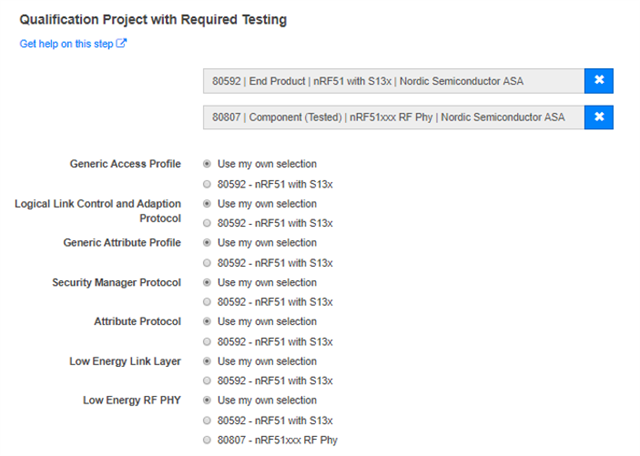Hey
I am working for the first time on qualification process with SIG, my device is nrf51822 and softdevice - S130 (version 2.0.2) and I understand that D030168 / QDID-80592 was qualified with version 2.0.0, (with the following statement “This qualification covers all device variants in the nRF51 series in combination with v2.x of the Sx3x SoftDevice stack”)
I have to specify whether I use qualified or altered versions of the following layers : GAP, ATT, GATT, LLACP, Security Manager Protocol, LE Link Layer and Low Energy RF Phy,
I would appreciate some insights on whether and what layers I have to qualify,
* since I use and added manufacturer specific data I assume I will have to qualify the GAP, but do I have to qualify the LE Link Layer?
* I am using standard services (such as battery service) as well as my own custom services, I assume that I have to qualify my GATT, however I am not sure whether I should also re-qualify the ATT.
* My device is only a peripheral interacting with one central, and it is using just LE protocol so I think there is no need for Logical Link Control and Adaption Protocol?
* I assume that having my own custom hardware Antenna means I need to qualify my Phy layer.
* I assume that I do not have to qualify Security Manager Protocol if I do not use pairing or bonding?
Thanks!


